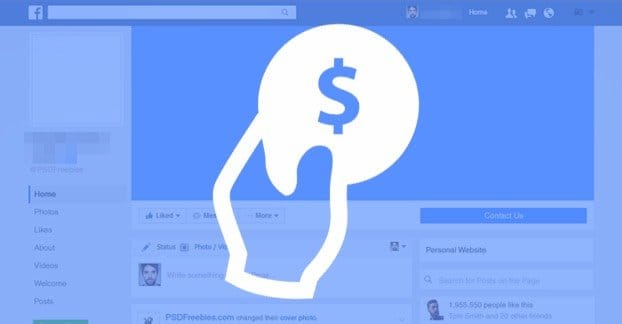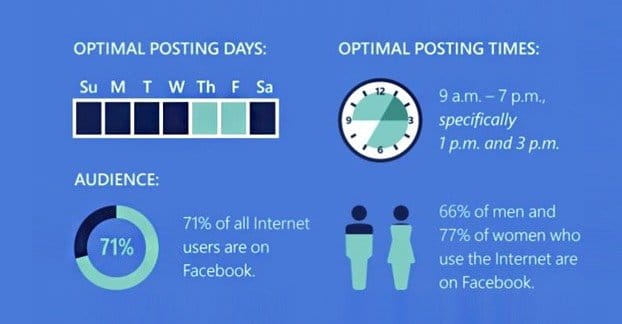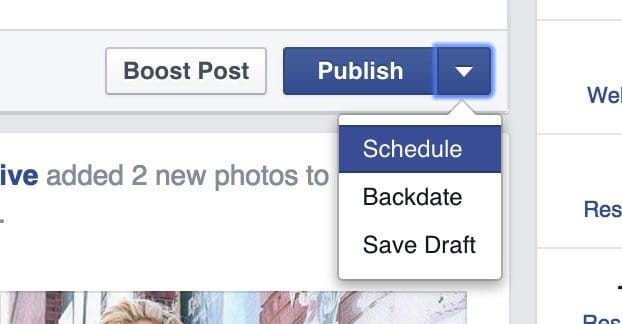 Written by ContentPowered.com
Written by ContentPowered.com
I’m going to start this post off with something I’m sure none of you want to hear. Sooner or later, you’re going to have to buy ads if you want to be truly successful on Facebook. Now, this isn’t a bad thing. Facebook ads are very good when you use them properly, they can be very cheap – as low as $1-5 per day – and the targeting options available to you are simply insane.
That said, we’ve written extensively on ads before, so this post is going to take a bit of a different focus. You can find some moderate amount of success on Facebook without paying for ads. You simply need to know how to use the site, and put that knowledge to use.
What I’ve done for this article is compiled as many tips as I can find, think up, or smash together for marketing on Facebook without spending a dime. I’ll cover everything from optimizing your profile to targeting organic posts and everything in between.
General and Profile Tips
These tips are designed to help you make the most out of your Facebook experience in general. I’m skipping the basics, like filling out your profile or being active every day; I assume that if you’re serious about marketing, you’ve read those a thousand times already.
Be prepared to take your time. Paid advertising will certainly speed up your growth, but without it, you’re looking at a long investment of a lot of time and effort. That’s what money saves you, after all. Don’t expect explosive growth. Don’t expect tens of thousands of followers, unless you’re a major brand. Chances are it will be at least six months before you break 1,000, though it will obviously depend on your audience and how well you capitalize on them.
Know what segments of your audience are active on Facebook. Facebook is great for marketing, and while there are a billion people using it, it’s not for everyone or for every brand. Some brands do best on other social networks, and while they can find some success on Facebook, it might be minimal. In particular, B2B brands have a hard time on the people-oriented social network.
Figure out what the demographics of your audience are. When you’re growing your audience, a huge part of expanding your success is knowing as much as you can about them. Insights will tell you a lot about who is following you, and you can use that information to specifically target them in both your organic posts and your organic targeting. Every tip for posting relies on you knowing the kinds of things that appeal to your audience, be they motivational quotes, coupon awareness, giveaways, political commentary, or anything else.
Identify what times of day your audience is active. Facebook thankfully has a reading of the peak active hours for your audience. You’ll ideally want to be posting just shortly before the peak. Don’t stress too much about specific minutes, though; Facebook’s algorithm is more important than the time you post.
Treat your cover photo as a brand billboard. Your profile picture should remain relatively static, but your cover photo should change with trends, news, and ad campaigns. Use it to market to your visitors; anyone who sees your profile will see what you’re trying to promote via the large image at the top before they see anything else.
Keep a close eye on your Insights and your top ten posts. Your Insights panel is chock full of great information, including a readout of your top ten best performing posts. Every month or so, you should check on those posts to see what you’ve been doing right, and keep doing more of that.
Learn and love EdgeRank. EdgeRank is Facebook’s algorithm and determines who sees posts and when. It takes in consideration how recently the post was made or engaged with, how often the user interacts with your page, the type of post, and a few other factors. You can read all about it here.
Posting and Engagement Tips
These are specific hints and tips for making posts and getting the most out of those posts. Since this is the meat of a good Facebook presence, this is where the most tips are.
Don’t just treat Facebook as a blog RSS stream. There’s more to posting than just sharing your blog posts, and this is one of the top things I see people get wrong. Posting links to your blog should be no more than 15% of what you do on Facebook. The rest should be curating content, posting unbranded content, and generally developing a presence and a voice.
Have an established goal for every post you make. This is surprisingly hard for many people to grasp. Sure, your posts should look off the cuff and organic, but behind the scenes, they should be carefully engineered for what you want. Do you want a lot of simple reaction-based engagement? Post something that earns likes but not much comment. Do you want comments and discussion? Ask questions and post thought-provoking questions. Do you want more followers? Post something that encourages them. The important point is that every post has a purpose.
Share behind the scenes content for your business. In almost every case, a glimpse behind the curtain is a great way to inspire interest and confidence in your brand. For example, a computer manufacturer might make a short video following a computer from its part creation to assembly to shipping. A jeweler could post about the process of selecting an ideal diamond. A look behind the scenes is great for engagement.
Create content that inspires comments or reactions for engagement. If you’ve ever seen an image with the reactions overlaid, with a “like for X, haha for Y, sad for Z” sort of format, you know what I’m talking about. This, and the basic “which do you prefer, beer or wine?” kind of questions are all excellent for fast, simple engagement. You get people to weigh in or vote for their choice, in a no-brainer moment that takes a mere second. However, it boosts their EdgeRank affinity, so they see more of your posts going forward.
Think up deep questions to ask of your audience for valuable feedback. Getting your users to respond to a deep question can be a trial. Many of them are browsing on a mobile device or otherwise not in a position where they can put a lot of thought into their answers. These are the kinds of posts that can perform very well, and get you a lot of valuable information, but you need to promote them and repost them. This is why a lot of brands use an external source like SurveyMonkey to harvest detailed information easily.
Run contests with more than just a like as an entry method. Every bit of engagement you get is excellent, and this is why I love contests through Gleam. Gleam has a whole bunch of different possible entry methods, including a like, a share, and a post. You can get a lot of engagement out of one contest using multiple entry methods. If you don’t want to pay for Gleam, go ahead and make something manual, like a caption contests or a “fill in the blank.”
Don’t just post great content; engage with the people who comment on it. This is another huge step a lot of people miss. Social networking is all about the social aspects of conversation. You can’t just post and expect them to take off; you need to take a direct hand in promoting and encouraging them. When someone comments, comment in response, start a conversation, and strive to keep it going. Even if the post is more than a couple days old, as long as the comment is fresh, it’s good for a response. You’ll want third party tools to help you manage this, so more on those later.
Strive to be available to respond to messages at the drop of a hat. For many pages, there is contact information, and next to it is a “usually responds within X hours” reading. You want that to be as low as possible. When people message you, respond as quickly as possible, even if that response is simply to answer a common question, troubleshoot an issue, or refer them to customer service. However, do not try to game this with automatic responses; it will be frowned upon by your users.
Like the shared versions of your posts to thank users for sharing. This is a simple technique you can use to make your users feel recognized for their efforts, but it doesn’t scale well once your posts are getting hundreds or more shares. At low levels, though, simply go to the post the users shared and like it. They will see that your page liked their shared version of your post and will recognize that you acknowledge their help. If you’re feeling frisky and the sharer is an influencer, you can even leave a comment with a thanks for the share.
Create an industry-themed Facebook group with exclusive membership. Jon Loomer does this very well with the Power Hitters Club, but you don’t need to be that exclusive or intense about it. Simply make a Facebook group with admin-approved entrance, but feel free to approve everyone. Make it a hub for more casual industry discussions, the kind of content that doesn’t quite work on your page. It’s also great for networking and as a source for curation.
Avoid hashtags. #seriously. Facebook and Twitter are both popular social networks, but while hashtags are essential for one of them, they are completely irrelevant on the other. Hashtags on Facebook are actually known to decrease engagement, because people figure you’re cross-posting from one of those other sites and not actually paying attention to your Facebook presence.
Scheduling, Tools, and Targeting Tips
This last section of tips is all about targeting your posts, and a few about using third party tools to make your life on Facebook easier. Take them to heart; this is where the best value comes from Facebook.
Be wary of automation beyond simple post scheduling. Overt automation tends to kill engagement, because a huge part of engagement is the personal touch. Believe it or not, people can sense when you’re automating your content, and they’ll push back, generally by ignoring the content. You don’t want this to happen, so don’t risk it.
Take advantage of organic post targeting. Organic post targeting is a lot like post targeting for ads, but not quite as robust. It helps preferentially show your posts to people in certain subsets of your audience, but it’s still restricted to your audience. If you want to show your content to people outside of your audience, that’s when you have to pay. In any case, learn how to use it here. The guide is a bit old, but still accurate.
Share old, well-performing posts overnight for a second round of exposure. You can share the posts, or if the content is something you link to, you can post it again. This gives the content an extra bit of life, to catch the people logged on late or in a better position to comment. Sometimes, the second round can even be better than the first.
Don’t be afraid to use third party tools. A lot of people worry about not being “big enough” or not having the time to learn third party tools. Really, it’s a mixture of laziness and fear of trying something new. There are a lot of valuable tools for managing a Facebook presence, so much so that we even wrote a post about them. Check it out and find something you want to try.
At the end of the day, marketing on Facebook without ads comes down to two things; posting good content, and encouraging engagement with your responsive comments. To that end, the best tool in your arsenal is notifications. Anything that can ping you when a comment appears or a share happens is perfect, particularly for smaller businesses. You don’t need the top-end enterprise tools, but you should have something.


